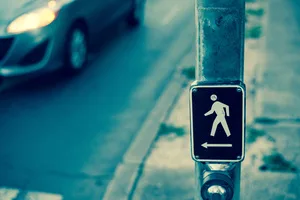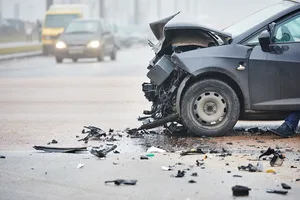- June 7, 2024
- Community

This past Monday, April 29, 2024, the U.S. Department of Transportation’s National Highway Traffic Safety Administration (NHTSA) finalized the Automatic Emergency Braking Systems for Light Vehicles rule. The new Federal Motor Vehicle Safety Standard will make automatic emergency braking (AEB) standard on all passenger cars and light trucks by September of 2029. The goal is to address the growing crisis of motor vehicle collisions and fatalities on the road, but what exactly will this mean for Texans and non-Texans alike? In today’s blog, your Dallas, TX catastrophic injury attorneys will answer this question and provide insight into the new NHTSA rule.
What To Know
It goes without saying that automobile collisions — whether involving drivers, pedestrians, commercial vehicles, or some combination — are a leading cause of death in the United States, especially for individuals between the ages of 1 and 54 years old. What’s more? Texas is unfortunately leading the nation in terms of fatal car accidents, as there is a crash on the roads roughly every 71 seconds and a car-related death every two and a half hours.
To address this growing state and national problem, the NHTSA’s new rule supports the 2022 National Roadway Safety Strategy, which was launched to address the stated national crisis. Automatic emergency braking utilizes sensors to detect when a vehicle is close to coming into contact with another vehicle or a pedestrian, and subsequently applies the brakes to prevent collision. This new standard will require vehicles to stop and avoid contact with other vehicles or obstacles going up to 62 miles per hour, as well as detect pedestrians accurately in both daylight and darkness. To learn more about this new rule, reach out to our team.
How It Will Affect Texans
Since many newer vehicles already come with AEB, NHTSA Deputy Administrator Sophie Shulman shared the department’s hopes that many cars and light trucks will be able to meet this standard ahead of the deadline. Moreover, the new rule is estimated to save at least 360 lives a year and prevent at least 24,000 injuries annually. Finally, it will reduce injury or property damage and associated costs with automobile crashes.
While these are a few of the several benefits of the new rule, it is important to understand its protections as well as limitations. Our team of experienced and seasoned car and truck wreck attorneys can help you better understand how this regulation will affect you as a Texas driver, and we encourage you to schedule an initial consultation with our firm if you have any questions.
Learn More Today
Vehicle collisions are one of the leading causes of death in the United States, but the NHTSA is taking steps to reduce injury and promote safety on the road. Contact Crain Brogdon LLP in Dallas, TX by calling (214) 522-9404 to learn more about the recently enacted Automatic Emergency Braking Systems for Light Vehicles rule.

Attorney Quentin Brogdon
Quentin Brogdon has over thirty years of experience and expertise in the field of personal injury trial law. He is board certified in both personal injury trial law and civil trial advocacy. Quentin has received an AV rating from Martindale-Hubbell, the highest possible rating. This rating reflects an attorney’s ethics and abilities according to reviews from fellow attorneys. [ Attorney Bio ]




